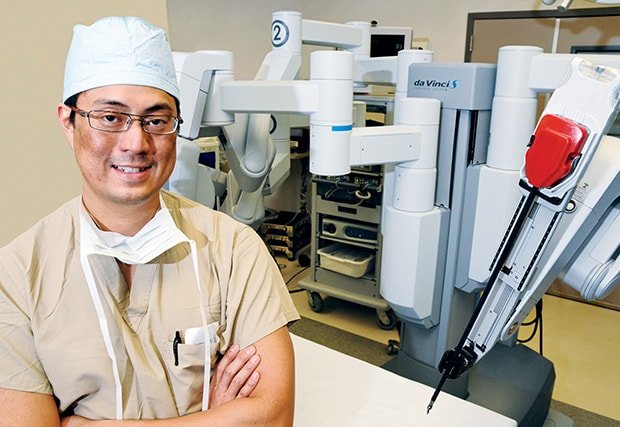According to the National Cancer Institute, colorectal cancer is one of the top three most diagnosed cancers, and for 75 percent of patients, there is no family history. Associate Professor of Surgery, Chief of the Division of Colon and Rectal Surgery Vincent Obias, MD, FACS, FASCRS, says chemotherapy and radiation can help shrink the tumors, but with the use of robotic surgery, patients usually have better outcomes.
The GW Hospital was the first in the region to use the da Vinci® Surgical System for robotic colon and rectal surgery, and it is known as a Robotic Colorectal Surgery Epicenter. Surgeons come to GW Hospital to learn techniques from Dr. Obias. “Traditionally, patients requiring rectal surgery for low rectal cancers needed a permanent colostomy or ended up with a large open incision,” says Dr. Obias. “But we are able to avoid that by doing robotic surgery. Very few institutions in the area have surgeons who are experts in this type of advanced robotic minimally invasive surgery,” he says.
The da Vinci robot’s articulating instruments allow surgeons into smaller places where it is difficult for the human hand to reach. Instead of one long incision, only a few small openings are needed to access the area. Three-dimensional magnification provides greater precision for removing the cancer and suturing the area. It can also help reduce nerve damage, trauma, pain and recovery time as compared to open surgery.
Learn more about The George Washington University Hospital Robotic Colorectal Program.
Individual results may vary. There are risks associated with any surgical procedure. Talk with your doctor about these risks to find out if robotic surgery is right for you.

